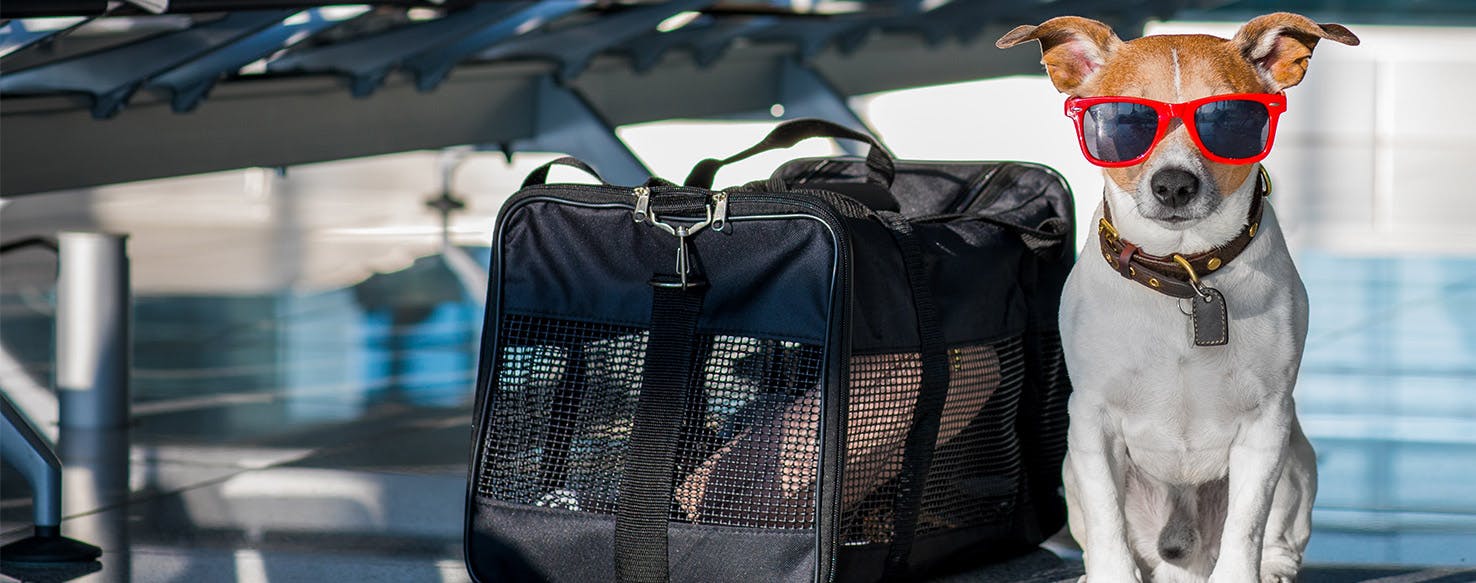- Home
- Dog Wellness
- 5 Aspects to Consider When it Comes to Dog Boarding
4 min read
5 Aspects to Consider When it Comes to Dog Boarding

Save on pet insurance for your pet
You don't have to choose between your pet and your wallet when it comes to expensive vet visits. Prepare ahead of time for unexpected vet bills by finding the pawfect pet insurance.
Your dog is not just your pet, they are part of the family. You give them the best care possible, including the best food, exercise, and love that they deserve. Sometimes it can be hard to leave your dog at a boarding facility, but the truth is, that sometimes you don’t have a choice. There are several ways to eliminate your fears about leaving your dog with someone else. This article is designed to help take the stress out of boarding, for both you and your dog.
#1. Plan Ahead of Time
You may be the type of pet owner that would never consider boarding your pet, but sometimes, it is good to have an emergency plan. Life happens quickly, and you want to always have a plan for your furry friend. Whether you are seasoned in boarding your dog, looking for the occasional care facility, or making an emergency backup plan, strategizing ahead of time is always a good practice.
#2. Ask for References
When companies hire a new employee, they ask for references before entering into a commitment with a person that they do not know. This should be doubly important when you are looking for someone to care for your dog while you are away. A good rule of thumb is to ask for at least three references. The best recommendations can come from your veterinarian, or most favorably, from pet owners that have used the boarding facility before. Ask pet owners that have dogs with similar needs as your dog, so that you know the facility is the perfect fit for you and your dog.
#3. Visit the Facility
Choose a couple of facilities and visit them ahead of time. The very first physical aspects you will need to look for in the facility is if it is clean and has enough space for your dog. Put yourself in your dog’s shoes and think about the comfort of the surroundings. Is there good lighting? Is the temperature comfortable for your pet? Don’t ignore any feelings that you might have about the place. Do the dogs being boarded on your visit look happy and comfortable, or do they look distressed? You know your dog best. Think about the fears they have and try to eliminate any triggers of those fears when choosing a facility.
#4. Meet the Caregivers
Most horror stories that you see about big boarding facilities have to do with the staff. If at all possible, meet the person that will be interacting with your dog. Depending on the facility, you may be able to bring your dog with you to see how they react to the place and the staff member that will be in charge of your pet while boarding. Talk to this person about any behavior or fear issues your pet might have and let them know how you deal with these issues.
#5. Consider Alternatives
If you are in a situation where your dog needs care while you are away, you can consider alternatives to a traditional boarding facility. Look to a boarding host or pet care provider like Wag!, which offers the ideal solution to a pet parent who has concerns about having their dog stay in a big facility with a lot of dogs. This convenient and stress-free alternative enables your furry buddy to remain at home with an attentive and trustworthy caregiver while you are traveling, or your dog can stay in the caregiver's home. In this scenario, your pup's favorite toys and blankets accompany them and there is plenty of opportunity for playtime with the sitter each day.
How Do I Prepare My Dog For Boarding?
If at all possible, board your dog for short stays at first. If you have to leave for an extended period of time, try to board your dog for a short amount of time at first. Also, make sure that your dog is up-to-date on all vaccinations at least two weeks before their stay. Here is a list of information to leave with the boarding facility, pet care provider, or boarding host:
-
Your contact information and one backup contact
-
Your vet’s contact information
-
Medications, foods, and supplements, with the instructions of how to use them
-
Any health, behavior or fears issues your dog has
Here is a list of items to bring:
-
Put your dog’s collar on with identification tags attached
-
Medications, food, and supplements
-
Something that smells like you (like a worn t-shirt)
-
Favorite toys or chews
-
Grooming tools
Finally, make sure that YOU are prepared to board your pet. Research advises pet owners to not have a long, tearful goodbye with your dog. If you act like you will never see your pet again, it will obviously concern your dog. Dogs undoubtedly can sense your uneasiness and will feed off of this emotion. If you plan ahead, many of your concerns can be avoided and you can have peace of mind when boarding your dog.
You may also like
